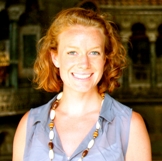
John R. Killacky
Vermont, like many states, is considering comprehensive tax reform. Committees in the Vermont Senate and House developed proposals last legislative session and systemic changes seem high on the agenda for the 2014 session. Key components focus on increasing the portion of personal income that is taxed by capping deductions, including charitable contributions. If passed, this revision to the tax code would negatively affect the work of nonprofit organizations statewide. Vermont’s robust nonprofit sector comprises nearly 4,000 human, social service, educational, religious, and cultural organizations, ranking us No. 1 per capita in the nation. The Vermont Community Foundation reported in 2010 that these agencies generate $4.1 billion in annual revenue and represent 18.7 percent of our gross state product. Nonprofits deliver critical services that government alone cannot provide: sheltering, caring for, and feeding those less fortunate; early childhood education; and cultural enrichment are just a few examples. Nonprofits include schools, hospitals, churches, libraries, community health clinics, workforce development centers, mentoring programs, homeless shelters, food banks, theaters, and galleries. Some focus on specific populations: providing safe spaces for women, LGBT youth, refugees, the disabled, and migrant workers. They range from small, volunteer-run groups to huge universities. Although more than 80 percent of Vermont’s nonprofits operate with budgets of less than $250,000 each year. By delivering mission-related programs, nonprofits improve lives and transform communities. Investing in early intervention is more cost-effective than dealing with societal dysfunction later in life. Food and shelter vs. homelessness, after-school tutoring vs. illiteracy, involved children vs. disengaged teens, job skills training vs. unemployment, community vs. isolation — consider the alternatives.
Read More




















